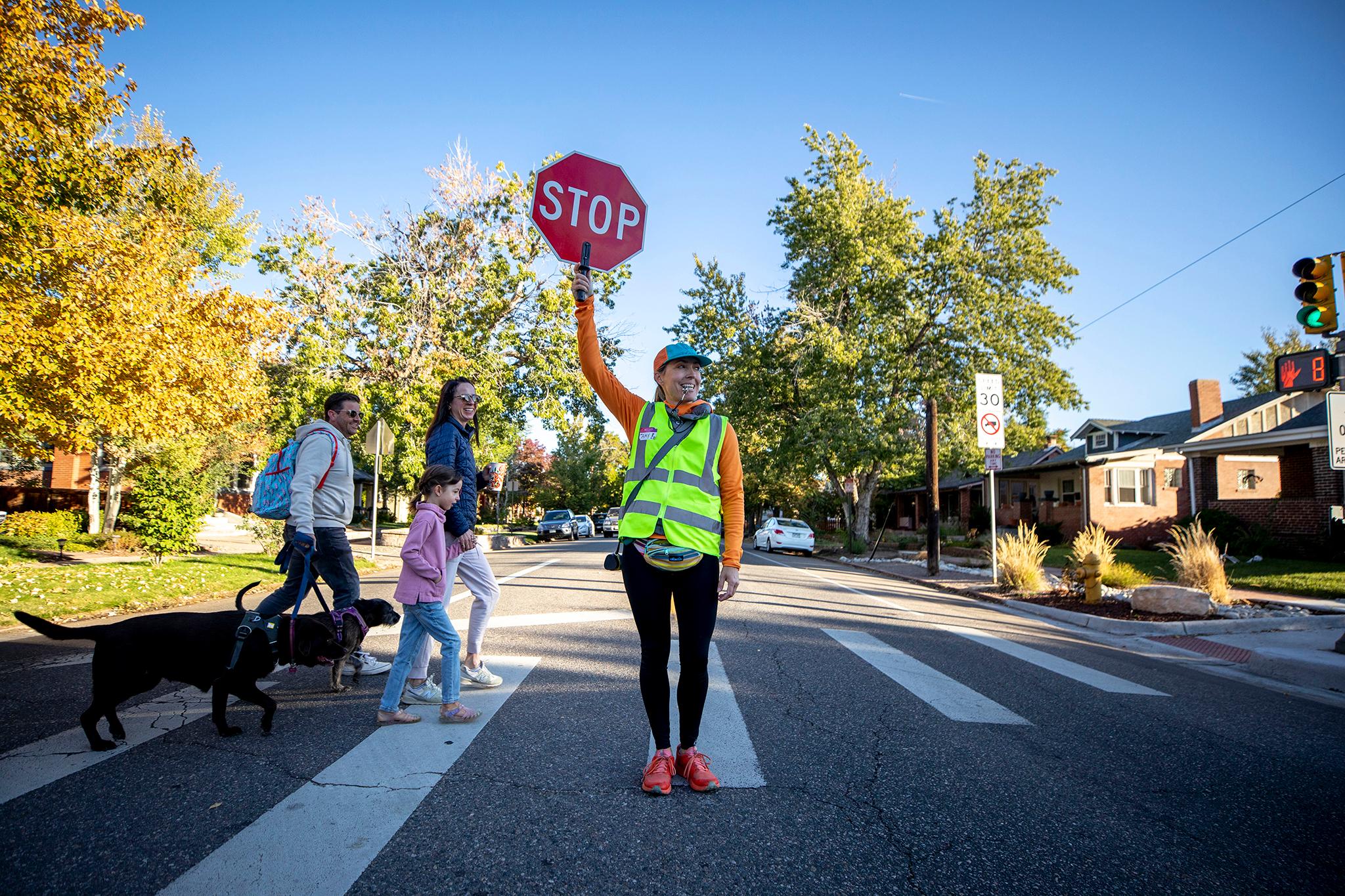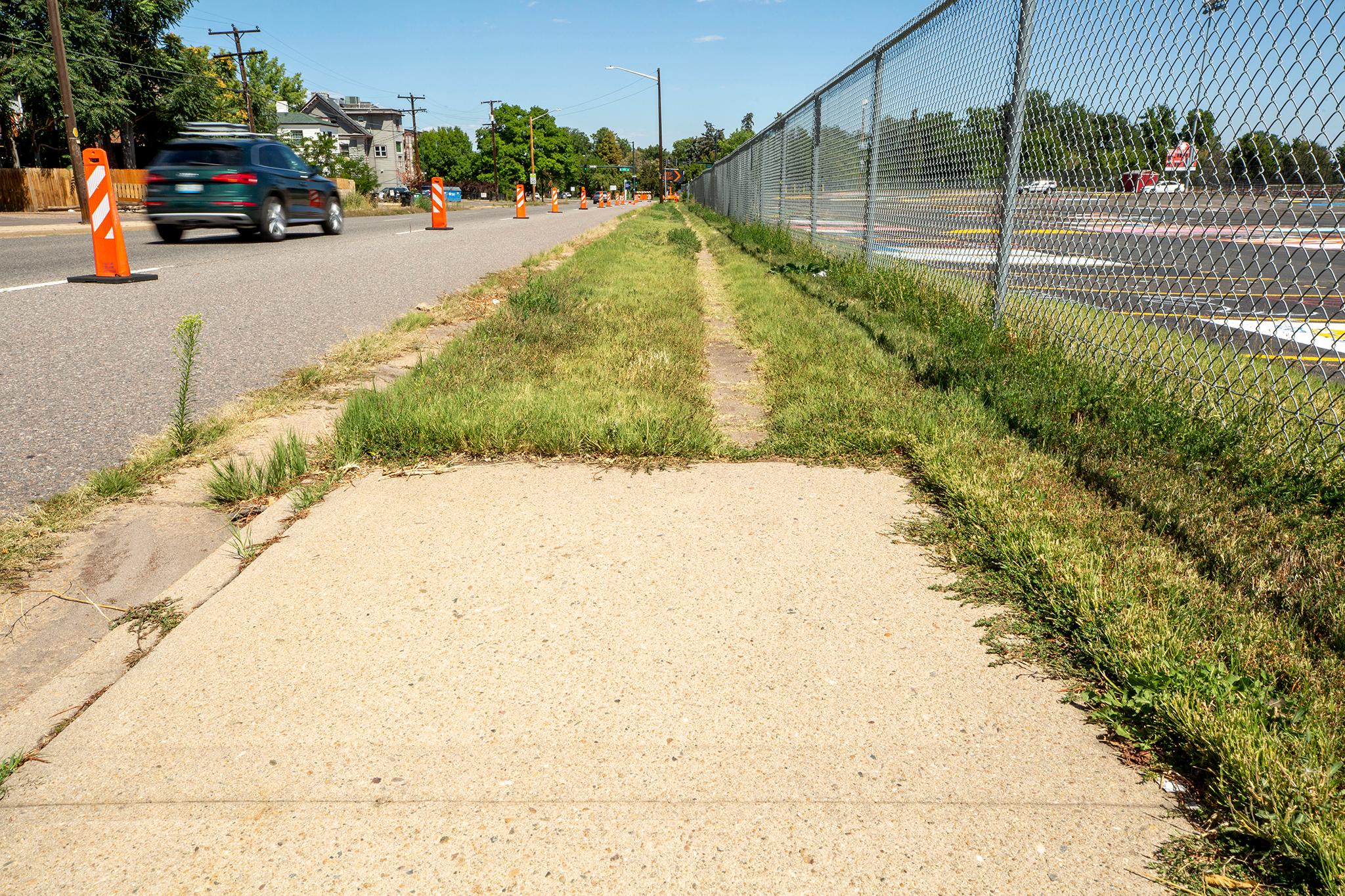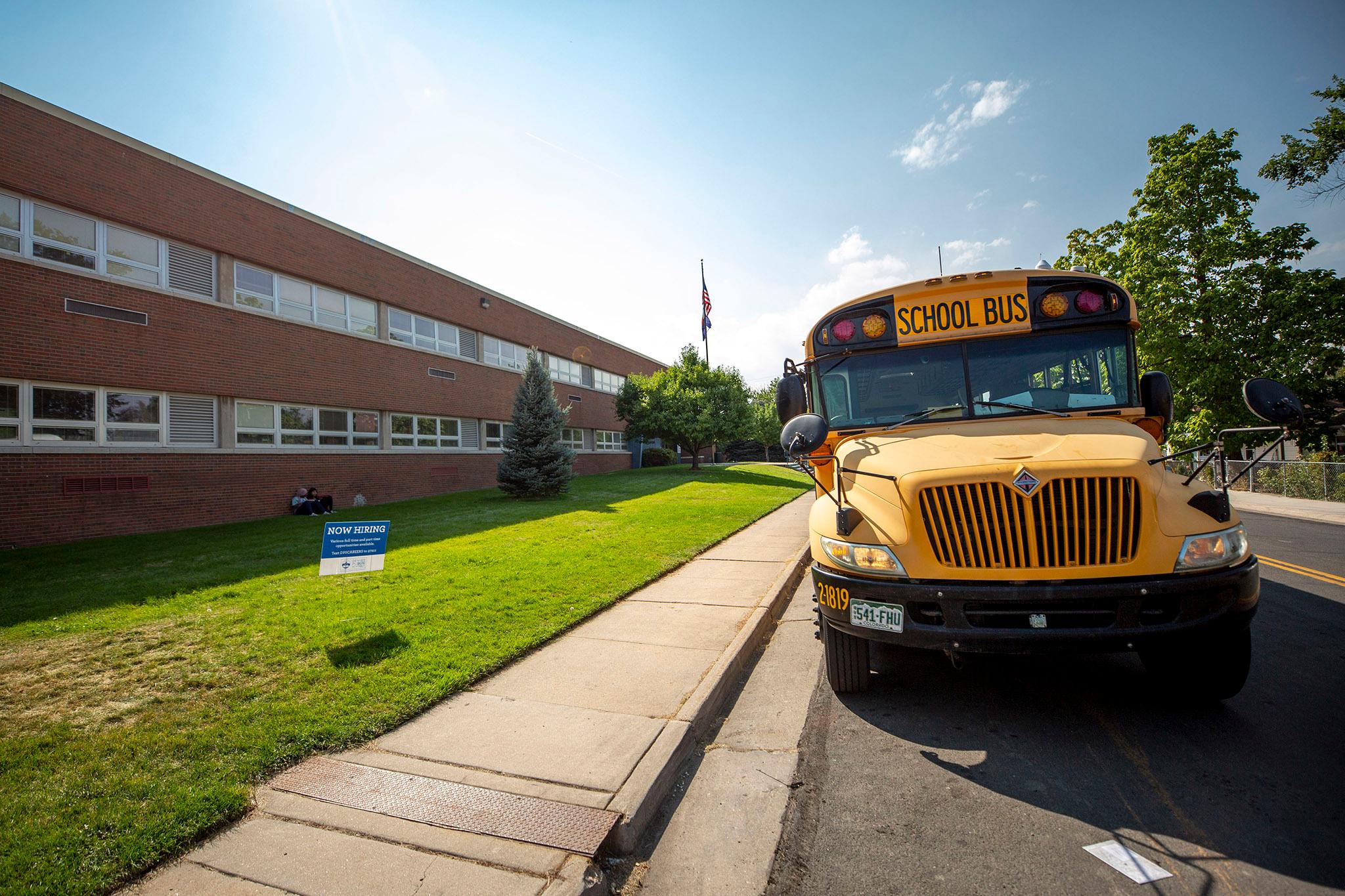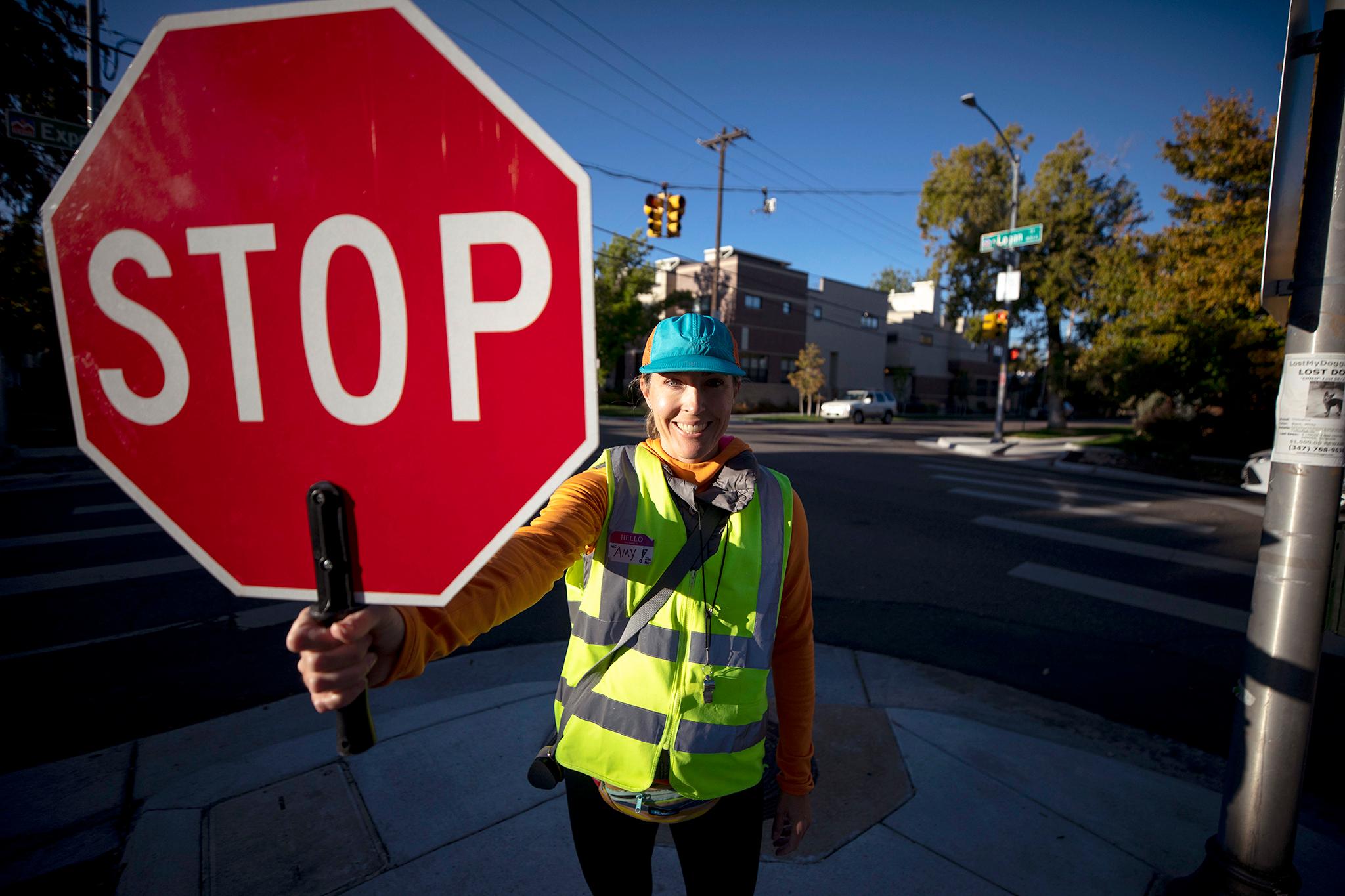Amy Kenreich became a volunteer crossing guard around 2017.
She doesn't work for Denver Public Schools, but every morning and afternoon, you'll find in her in a neon vest with her whistle and big red STOP sign helping kiddos cross S. Logan Street to get to Lincoln Elementary.
Kenreich said about 50% of students at Lincoln live west of Logan, so they have to cross east in order to get to school, but crossing the busy intersection is not an easy feat.

She believes more kids would be walking or biking to school, but they don't because the road is dangerous to cross alone.
"Even when they're with an adult, it's still treacherous to cross [here]," she added. She estimates that, since becoming a guard at that section, the number of kids crossing each day has doubled to 50.
Though Kenreich is making difference at this intersection, there's a need for more crossing guards across the city. Out of 200 schools, DPS has crossing guards at just 35 of them.
That's where Kenreich is stepping up by advocating for more Denverites to don the fluorescent outfit and to help promote the job. As part of her push, she put together a celebrity crossing guard event in honor of National Walk to School Day on October 12.
About 20 local celebs, from city officials to musicians, will come out Wednesday and help children at several schools across the city safely cross intense intersections.
Some of the celebs participating include, city councilmembers Amanda Sandoval, Jamie Torres, Amanda Sawyer, Paul Kashmann, Jolon Clark, Candi CdeBaca, Chris Hinds and Debbie Ortega. DPS Superintendent Alex Marrero and U.S. Senator John Hickenlooper will also be joining along with Joshua Randy Abeyta from Los Mocochetes and Steve Staeger from 9news.
"I was pleasantly surprised that they felt like it was worth dropping what they were doing to put themselves in the shoes of our everyday crossing guards," Kenreich said. "One of my goals is to have elected officials, people who have the power to make changes in our city, experience what it's like out there. It's a very rewarding thing to do, spending my time as a crossing guard, but it can also be crushing when a driver disregards your request to stop. It can be scary. It's a tough job."
Kenreich said celebrity guards will be handing out raffle tickets during Wednesday's event that'll give students a chance to have lunch with their principal or favorite staff members. Celebs will also be handing out signed autographs. She added that it's a way to get children excited about walking or rolling to school which she hopes prompts parents to continue to allow their child to do so.
Many people may not be aware that they can apply to be a crossing guard, without having to work for DPS.
"It's a great opportunity to make extra money," Kenreich said. "It's flexible and if you're a parent, it's very convenient. But even if you live nearby, it's a huge way to help the community. I don't think people know that this opportunity exists."

Crossing guards make $18 an hour and Kenreich said guards work about two hours a day.
Her overall goal is help make Denver streets safer for more kids to walk, bike or roll to school.
"It can be a life or death situation out there...When you put yourself in our crossing guards shoes, it changes your behavior," Kenreich said. "It's a cultural shift... It gets community members interested in safe streets. If you've experienced the streets in that way, then you're more likely to advocate for safer infrastructure."

Another of Kenreich's goals is to bring awareness to what walking or rolling to school does for the neighborhood.
For one, it stops congestion. According to city data, about 14% of DPS students walk or bike to school, while 67% of DPS students are driven to school. About 25% of rush hour traffic is due to kids being driven to school.
"It's so good when kids can walk and bike," Kenreich said. "It's good for them. It's good for the community. You get to know your neighbors when you're out walking and biking. It's good for the health of the students. It gets their wiggles out before class. It's good for the environment. It makes less congestion at drop-off and pick it up."

Through Denver's Safe Routes to School Action Plan, it's the city's goal to double the amount of kids rolling and walking to school, up to 30%, by 2026. Some of the ways the city is trying to accomplish that goal is by teaching kids how to ride a bike, working on Vision Zero and increasing the crossing guard project.
So far this year, 68 people have died on Denver streets. There hasn't been a death since September 24.

Kenreich said some improvements she would like to see is spreading out the school zone speed limit. For example, though she guards down the block from Lincoln, her intersection isn't in the school zone limit. On Logan, the speed limit is 30 mph. She'd like to see zones increase to accommodate walking students.
But through the celebrity event, she hopes more people sign up to be a guard. Kenreich said one of the easiest ways for drivers to remember that pedestrians exist is for them to be pedestrians more often.
"Me being out there, I'm making eye contact with drivers. I can give them a dirty look if they're on their phone," Kenreich said. "It does change behavior when drivers see a human being out there. It wakes them up and makes them pay attention. It's a band-aid until the city can repair the damage it's done by designing our streets for driving instead of humans."












